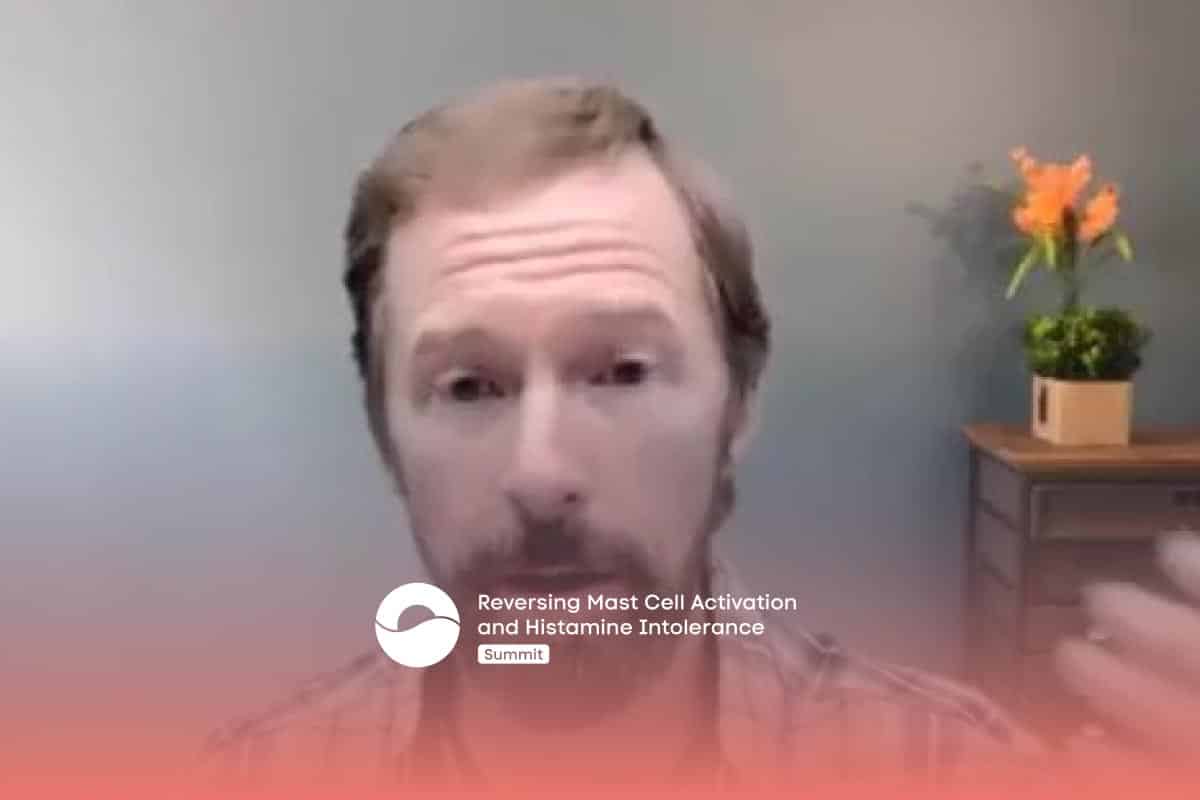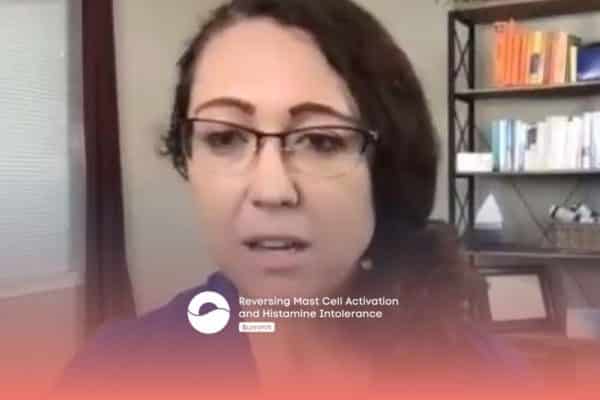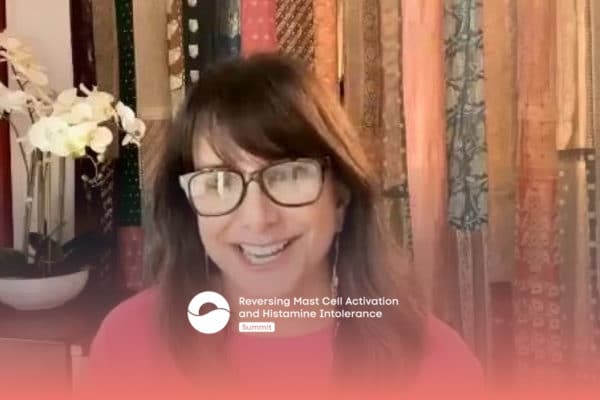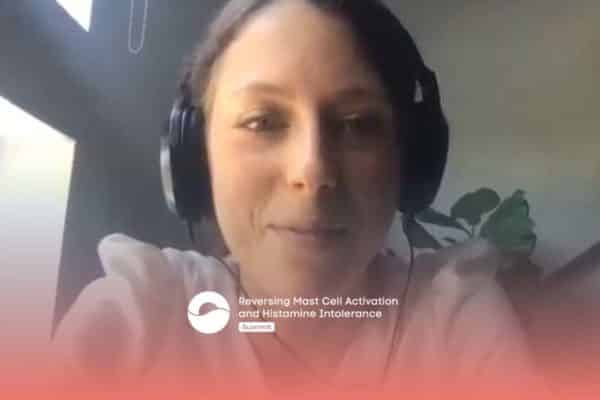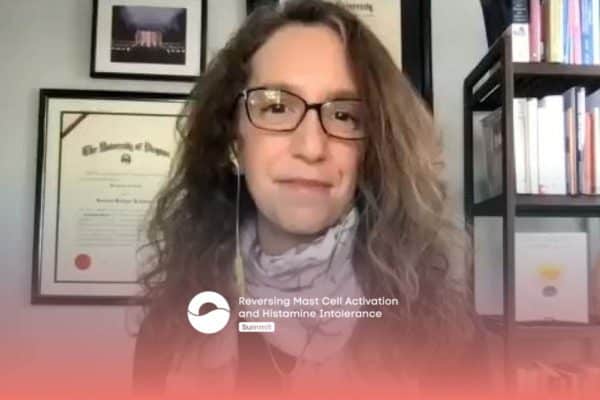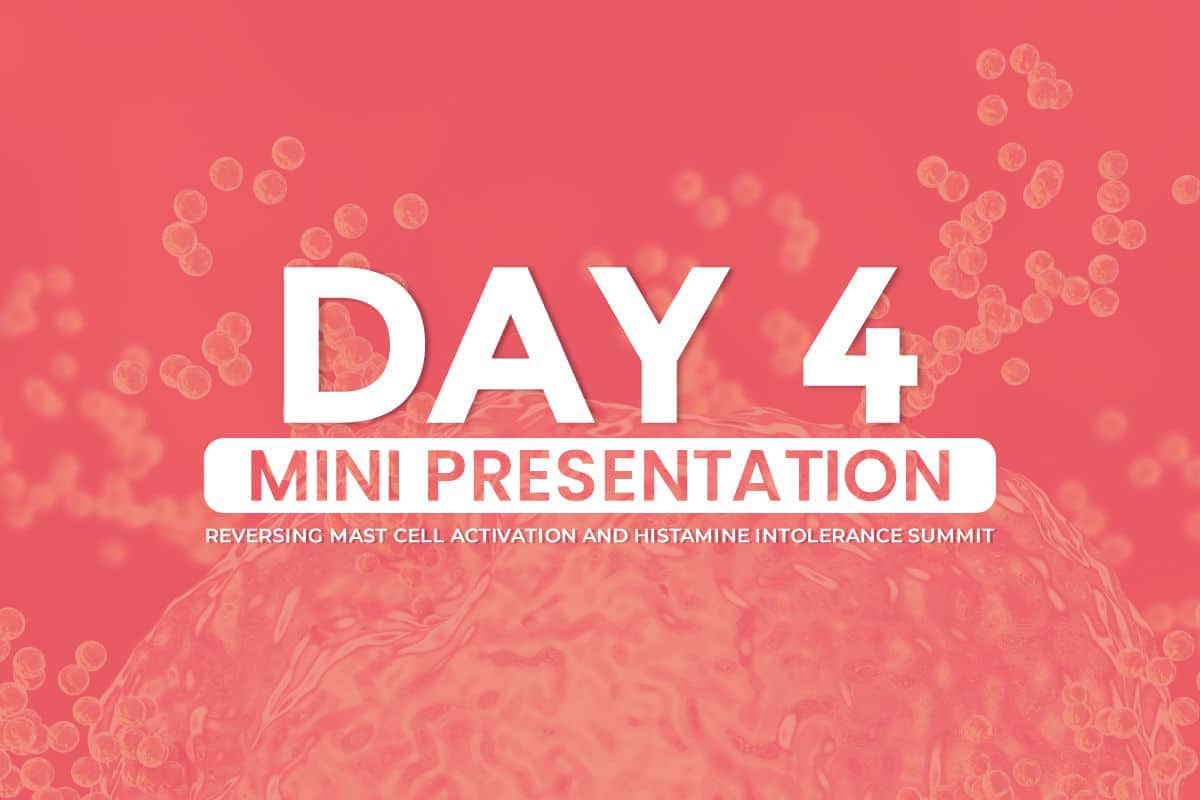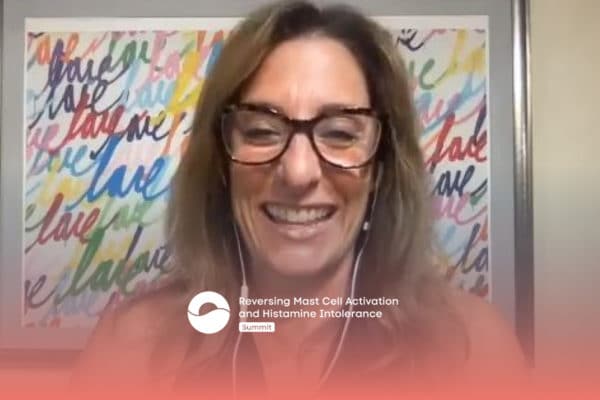Join the discussion below
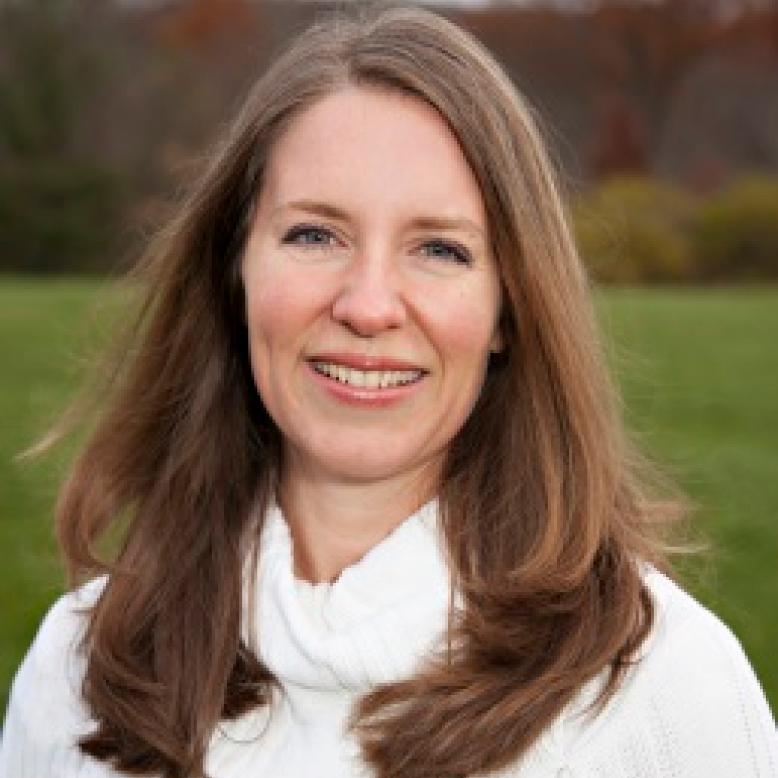
Beth O’Hara is a Functional Naturopath, specializing in complex, chronic cases of Mast Cell Activation Syndrome, Histamine Intolerance, and Mold Toxicity. She is the founder and owner of Mast Cell 360, a Functional Naturopathy Practice designed to look at all factors surrounding health conditions – genetic, epigenetic, biochemical, physiological, environmental,... Read More
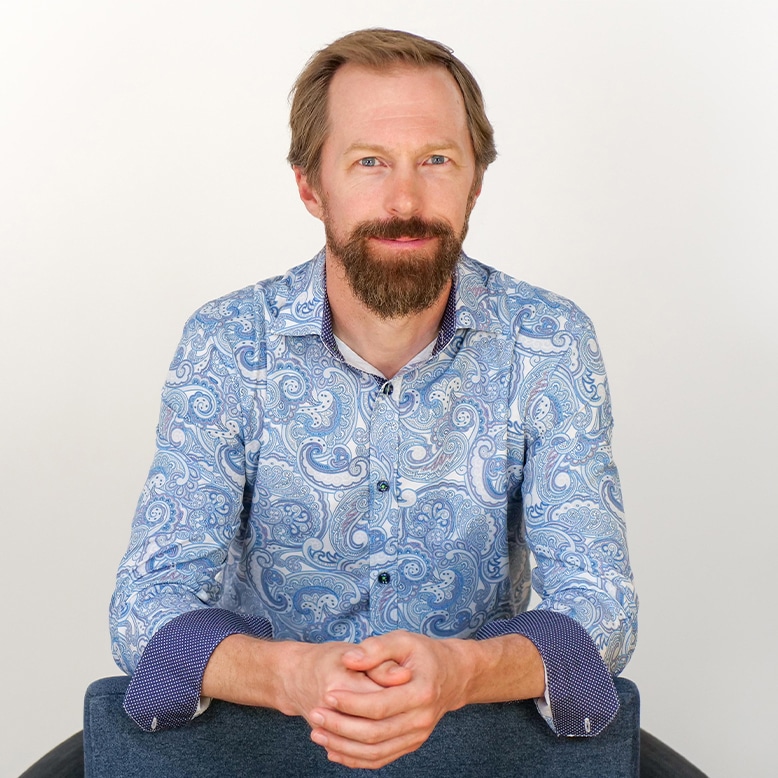
Dr. Tom treats some of the sickest, most sensitive patients suffering from chronic Lyme disease, tick-borne co-infections, mold illness as well as children with infection-induced autoimmune encephalitis (PANS/PANDAS). He focuses on optimizing the body’s self-healing systems in order to achieve optimal health with simple, natural interventions; utilizing more conventional approaches... Read More
- Secrets to recovering from sensitivities
- The 3 minute daily mindset exercise
- The role of empowerment in healing
Beth O’Hara, FN
Welcome back to the Reversing Mass Cell Activation Syndrome and Histamine Intolerance Summit. I’m your host Beth O’Hara of Mass Cell 360. And today we are talking with my really dear friend and cohost who I’m so happy to have with us, Dr. Tom Moorcroft. We are gonna be talking and diving in depth about tickborne diseases. Things like Lyme, Bartonella, Babesia, from an angle that you may not have heard before. And I think you’re gonna really like this interview, particularly if you’ve dealt with any of these. So let me just tell you a little bit about Dr. Tom. He treats some of the sickest, most sensitive patients suffering from chronic Lyme disease, tickborne co-infections, mold illness, as well as children with PANS, with PANDAS. and he specializes in optimizing the brain’s detoxification system. He’s the creator of the Lyme Disease Practitioner Certification and Mentorship Program, and co-founder of Meditation RX, and he’s former acting president of ILADS, the International Lyme and Associated Diseases Society. Through nearly two decades of medical practice, Dr. Tom is seeing the importance of mindset, which is the habitual patterns that create our results with our healing and our health. And his mission is to share proven strategies for aligning your conscious and subconscious mind so you can design your health, your personal goals, and achieve them with amazing speed. Welcome so much, Dr. Tom. I’m really, really happy to have you with us.
Tom Moorcroft, DO
Yeah, thanks so much, Beth. This has been such a great journey working on the summit with you and all the great information that we’re able to share with everyone and I’m really still to be having this conversation and adding sort of my experience to all the awesome talks we’ve had so far.
Beth O’Hara, FN
I’m excited about it too. And one of the things I’m really excited about is because you have your own history of being really sensitive. Which a lot of practitioners haven’t gone through themselves. And it really changes how we practice, how we relate to people that we’re working with and how we understand how to guide sensitive people through. Can you just share with people a little background of your own story and what got you into working with these things?
Tom Moorcroft, DO
Yeah, I mean, it’s interesting when I look back, in retrospect as a kid, like I just remember going into like the big box stores with all those fluorescent lights, and it was like, I felt like I was being attacked by them. Like, eh, making all this noise and like, oh God, it was so like miserable, right? But I also, at the same time remember feeling like, if you put your hand on a tree, you could actually feel fluid moving in it. And if you walked on the earth, you could feel like, what I felt like were like the earthworms moving, right? Like, I really felt connected with the environment, the natural world. But then when I was in the sort of the artificial, human created parts of the world, I was like, oh my God, I can’t ha… But then everyone just told me it was all wrong, right? My experience of myself in the world was not correct. So a lot of this extra sensitivity and really being open to my gestalt or my gut reaction and really leading with my heart was I was told not to do that. And I believe it was because the people around me wanted me to be safer. They were afraid of walking that way. And so then fast forward, many, many years, I’m at the University of Vermont. I love the planet, I love being outside. Just everybody who knows me, it’s like, all I do is play outside, right? And so, I’m like, I’m talking to adults and they all just wanna talk about their opinion and the papers, but they don’t wanna take action. So I was like, how do I get someone to take action? I’m like kids take action.
They get excited and they just go. So I changed instead of just doing landscape ecology and wildlife management, I went into teaching children. And so I actually, when I did that, ended up getting Lyme disease Babesia teaching them about how to protect the world and get excited about it. And when I was working one day, my boss comes up to me and she’s like, what the heck is going on? She found me staring at a blank computer screen. I had literally had drool coming out of my mouth into my lap. And then looking back, it was like I was having this weird migraine grading joint pain and muscle pain. And then I had horrible brain fog, but I see the doctor and he is like, “Don’t worry, you have classic Lyme disease, “take doxycycline for 10 days and you’ll be good to go.” And so, I felt like crap for a couple days and I felt great. But several months later, and over the course of the next eight years, I had all these brain fog fatigue and lots and lots of pain creeping. And then essentially I got to the point where I couldn’t do two plus three in my head. And they were just, the docs kept saying, oh, you’re depressed, or you’re bipolar whatever.
I’m like, my mood is crappy because I don’t feel well and I can’t move. And I know there’s something wrong with my body and you don’t seem to wanna help me. And yes at times I’m irritable because all you do is tell me to take a pill, to suppress the emotional response to my body being under siege. And the long and the short of that one is, I ended up about six years in going, my back’s against the wall in my mid twenties, I don’t wanna lose my life. I have shit to do in my life. I just, one day I had, I can clear as day I remember it, I was focused on the wall again. It’s kind of funny when I think back to it.
Here I’m staring at a wall again in our apartment and I just go, I have so much life to live and I have a choice now. I’m either going to focus on living that life no matter what, or I’m gonna focus on being sick. And I’d already focused on being sick and got sick of it. So, I kind of just took that step, and over the next couple years, integrating yoga and dietary sort of changes got a lot better like 70% better. Still needed the docs to find the Lyme, the Babesia and ultimately heavy metals that were in my way for that last 30. But that’s kind of what happened. And at that point I was like, there are other people like me. I felt like I was alone, then the more I learned there were other people like me, which also meant there was a role for me in serving and helping them understand they’re not alone. And not only are you not alone, it’s not all in your head and you can get better. So that’s what brings me here.
Beth O’Hara, FN
That’s so powerful. And I know this is why we’re good friends and why we’re just like on the same wavelength. And I love what you’re talking about, being super sensitive to these fluorescent lights in the world, but it also made you super sensitive to what’s happening with the trees and the earth. And it that’s been my own experience, and I–
Tom Moorcroft, DO
Just got chilled hearing you say that, I love it.
Beth O’Hara, FN
And we don’t talk about it a lot. but I start to open that dialogue with a lot of our clients, and they’re like, yes, but I’ve never told anybody. And I know some people can’t relate to that, but so many people listening to this can.
Tom Moorcroft, DO
It’s really interesting, Beth is I remember, I know this happens because a bunch of blockhead medical students and myself do this all the time, is when we were in medical school, there’s like 120 something people in a room, and right before the door opens like 80 to 90% of the whole room goes like this. So it’s not that there are varying levels of sensitivity, but it’s an innate birth rate that we have to be one with our surroundings. And the beauty of being a human is we have a rheostat that we can turn up and down. Like you can learn to dial it up or dial it down. And one of the things I learned from being sick was, and then subsequently working with people who are worried about their sensitivity. They’re like, I wasn’t that sensitive, but now I am. I’m like, that’s a miracle. I mean, ’cause my question often becomes like why is Lyme in your life? Why is mold illness in your life? And you can choose to focus on, I got bit by a tick in my life now sucks or you can go, Hey, this is something I have to deal with today, I’d prefer not to deal with it, but I have it in my life. Is there something that I can learn from it? Has it come into my life?
‘Cause what I realize is the more I focus on my connection to the universe and my connection, mother nature, God, whatever word you want to use, the more powerful I realize that I am. And it’s like, I always remember Marion Williamson’s quote that I’m paraphrasing, but essentially like people are not afraid of darkness. They’re actually what they’re most afraid of is how is their light, of how powerful they truly are. And it’s not an egotistical thing, it’s like we are a part of this huge ecosystem going back to the landscape, ecology and management and we have our role. But when we understand that what we do impacts the whole thing, the whole thing can impact us. And then we have the now we’re connected. We’re no longer separate. So now we have greater safety, which I know so many of our guests have spoken about.
But it’s like, you can actually have the freedom to be yourself and to experience the world in your own way. And for me, like with tickborne illness, I actually initially got less sensitive. It was really weird. Like I went the other way. And I was like, I didn’t feel much anything. And it took me a little bit of time to be more open, but there were lessons I needed to learn. And when I see people become more sensitive, I’m like, it’s a bad tool over here, when you’re saying like, I take a micro dose of like curcumin and I like freak out. But over here, you’re now more sensitive to the feelings of your partner. Which could be overwhelming if you’re not used to. But then you’re like, oh there’s some good and bads, and then I can learn how to dial this up and down.
Beth O’Hara, FN
I love this context. Particularly because these kinds of illnesses that we’re talking about, the mold toxicity, the tickborne diseases, the sensitivities, the mass cell activation, they’re really challenging and they bring their own trauma. And in trauma people either shut down, we can become worse human beings in a way, or we blossom and we really grow out of that. And if someone told me one time was working with me as a spiritual coach, that nearly every major spiritual leader has had extraordinary pain in their lives. And it’s like, that’s what cracks us open. And that’s what, I would never go back and choose my own life either that I had, but I wouldn’t be able to do the things that I do. I wouldn’t be able to have the relationships that I have with the earth, and the plants, the trees, and even human beings, and be able to really understand them and sense them and experience them and that opening of intuition. I love that you’re bringing this side of it to the table. ‘Cause we haven’t talked about this enough.
Tom Moorcroft, DO
Yeah. I think one of the things that we had we had talked about before is like, I’m always like, why are so many people with chronic Lyme disease perpetually ill? Like I get it, I like I know the science, I understand persistence, I understand early late Lyme disease and late late Lyme, like there’s all this stuff where you can literally get bit by a tick and you can get a persister cell biofilm injected into you, and you can literally have like late stage Lyme disease from day one, right? There is evidence that that probably can happen. We know that all this other stuff happens in the body, how these things can evade our immune system, it can hide in white cells and in microglia, like all these ways, antibiotic privileged sites, immune system privileged sites. But then there are the people who like, no matter what you do, they get better. And then there’s the other group of people on the other tail. Like if you look at the bell shape curve, right? Most people will get better. There’ll have some unique struggles along the way, but they’ll make some good progress if not great progress. but on the tails, which, depending upon your situation maybe bigger or smaller, you’re looking at no matter what I do, this person will get better, and no matter what I do, they stay sick.
And I’m really interested in this group of people because they tend to come see me. And I think it’s, some of it’s I’m interested in it I wanna help them get better, but also I’ve been there. Like literally, like I’m not kidding you. At six years in the illness, I literally said my life is leaving, and I have a choice. I either am going to grab the bull by the horns and achieve that future for myself, or I’m just gonna roll over and die. And the second one, that’s not in my vocabulary. Like on my worst day, I’m still like clawing the go, I just am this eternal optimist. But that also leads to other issues. So like some people don’t have that energy, but I also have a lot of irritability and anger that came up in those times, because I was putting the energy in, but I didn’t have anywhere for it to go ’cause I didn’t have the resources.
And then as soon as my mind shifted to what I saw my life being, and that was the most important thing, which is really critical like, what is your why? And what is that burning emotion behind it? That gets you going. Because then someone handed me a yoga DVD. And when they handed me the yoga DVD, I remember doing it. And I said, the breath is backwards. The physical movements and the breath were wrong. But I went through the whole thing to the end of the video and I saw where the guy learned. And I go, I betcha that 2000 year old version of this is correct because it’s old school. They actually had no technology. They weren’t trying to market anything. They were just trying to be alive on planet earth and be one with this amazing nature and life force around us. So then I looked Ashtanga Yoga Research Institute. I started learning all that. And like six months in my health shifted so much, I started, I could barely touch my fingertips to my kneecaps, right? And then eventually I got more physically sort of adapt at these things. And as I started to slowly, slowly, slowly do it, what happened was the pain started to melt away.
My brain started to detox. And what’s really cool about looking back is, people are like, well, how do I get better from Lyme? I’m like, well, we need to sleep, we need to detoxify our brain, and we need to pump the fluid out of the tissues. We need to get better nutrition in better oxygen in and get the toxins out. Well, what was I doing with yoga? Well, I learned and people who know Ashtanga, know it’s very physical. It’s like where power yoga comes from. And a lot of people who do it get injured because they make it, like a competition with themselves, and with other people. My teacher was like, “Yoga is movement on breath.” That’s not the end point of yoga, obviously, but when you start on a practice, you move, but you only go as far as you can take a full deep breath. So breath is number one. And so as I went through this, some days you push a little too hard and you catch yourself. So it’s a signal back off a little bit.
Then other days I had more resilience and I could go a little further. But what I found was, I was massaging and opening up the fascia and the muscles. As I did that, my physical pain decline. But as I did that, I was also the breath and the movement were allowing my mind to calm down. When my mind calmed down and physically I had slightly less pain, now I could start to sleep. And when we go back to like the glymphatic system, which is the detoxification system in the brain, I don’t care what medicine supplement intravenous you take. If you do not have the system working that will actually flush it out, once it’s bound up by that supplement or that glutathione that you shoot up in your arm or whatever, it’s not gonna leave your brain. So it’s just gonna redistribute. So I wanna optimize sleep and posture so I can drain the brain. So what I realized was doing the yoga, they knew, the yogis of the past knew what had to be done. They might not even had words for it. So then we play with it. And what was really interesting was I started to get a lot better. And then all of a sudden Coca-Cola and jolly ranchers didn’t seem like food. When we grew up like Coca-Cola’s a food group where I grew up.
Beth O’Hara, FN
Me too. I used to start my day with Coca-Cola and peanut butter crackers outta the vending machine, and I’d end it with ramen noodles, and if I had a little extra money can of tuna.
Tom Moorcroft, DO
Exactly. What I realized was my body was I started to have a soda like once every couple months, and then I was doing it once a year, just so I had it. And I finally tasted, I was like, my body rejected it so much. I didn’t even meet the doctors yet. And I was at one of the 13 medical schools in the country at the time that had a nutrition class, for MDs and DOs. 13 out of like 160 at the, whatever, which is pathetic. And literally it was B12 is a vitamin that is water soluble. And if it’s low, you’ll get numb or whatever. And it was so rudimentary. And we were only one of 13. So I was in a medical model where we didn’t know this stuff. So I had to listen to my body. And I think that that’s the gift of any of these chronic illnesses. And before anybody gets all mad and everything, I’m not saying that you deserve it. I’m not saying it’s your fault. I’m not saying I don’t want you better, but you’re in a situation that you’re in. It’s the reality. Like let’s stop fighting reality.
‘Cause fighting reality just makes things worse. And I’ve told people if you wanna fo.. like what I did, I focused on my future goal. But there was never a time in that day that I didn’t know, my body didn’t feel well. Like I couldn’t forget it because that was the reality. So it’s not like you’re gonna, somehow start thinking about you in the future as a healed person and focusing more on what you want than what you don’t want, and then forget about needing to go see the doctor or take the medication or the supplement, right? You’re gonna remember that. So I always say, it’s like, if I believe I’m gonna stay sick, that’s a self-fulfilling prophecy. If I believe that I have a chance to be healed and go live this amazing life that I’ve seen for myself and envisioned, I have at least a half a chance of getting there. I’d much rather take a half a chance than a zero chance personally.
Beth O’Hara, FN
Absolutely. And this is even different in the context of well, just do some affirmations such. ‘Cause I tried all that and I was very deeply in a different system, the Enga yoga system, but we’ve had very similar interesting journeys how parallel they’ve been. And I believed that I could meditate my way out of it at one point. Particularly when so many people told me it was in my head. And then I believed I could do therapy and therapy my way out of it, which didn’t work. But what made a huge difference was the choices that I made and the commitments to myself. And I remember being on, I had gone to see an energy healer, I’ve done all kinds of things like you have. I’ve done homeopathy, I’ve done traditional medicine, I did holistic before we had functional medicine, functional medicine, in Shamanic work, I did anything that might help me, I was game for. And I remember being with an energy healer and she didn’t know my history. She just knew, I looked like pretty bad. I dragged myself in there. And she put her hands on my feet and she just sat there in silence for about five minutes. And she looked at me and said, you need to decide if you’re gonna live or die.
Tom Moorcroft, DO
Wow, how powerful, right?
Beth O’Hara, FN
It was incredibly powerful and I have so much gratitude. It was hard to hear. It was hard, but I made a choice and then I kept making choices. Like I made choices that I’m gonna take care of myself first. I made choices that I’m as sensitive as I am as much as I feel everybody, and it’s still too overwhelming to go to a concert. I used to when I was younger, I can’t now, its too many people. That I respect that. I respect that about myself, I love that about myself. And I think that’s what you’re getting at is these kind of mindset choices that we make and how are we gonna frame this? And there were so as devastatingly nightmarish, as my health issues were, there were so many gifts and lessons I never would’ve gotten to.
Tom Moorcroft, DO
Yeah, the thing is we’re talking about a part of a protocol, right? And when you hear truth, it usually does two things. It resonates with you and it hurts like hell. So when people are listening and they’re like, Hey, these guys just, wow, whoa, it’s like putting a peroxide and salt into a wound. It’s like, partly it’s because your body is dying. And when I speak about your body, I mean like all aspects of you, mental, physical, emotional, spiritual, whatever you wanna call it, is dying for the truth. There are so many people, unlike the healer you were working with who are unwilling. They’re not confident enough in themselves, and they’re understanding of healing to actually tell you the truth. And I think that’s what I love about working with you and talking. It’s like, I hear truth all the time. Even if it sounds a little weird or it’s uncomfortable because the message is the most important thing.
‘Cause in the message is the healing. And when I talk about Lyme, I talk so much about it. Everybody’s like, oh, I have a parasite, I have a parasite. Like you do have a parasite, it’s called Lyme disease, right? Which is not a true parasite. But it’s an energetic, emotional parasite that will also physically change the way you function and keep you sick. But the energetic emotional part is, it’s just saying, Hey, I’m just, if you want, I’ll hug you and I’ll hold you forever, and I will keep you as mine. And then everybody just buys hook line and sinker. I’ve got Lyme, I’m never gonna get better. And you just keep going down that pathway of disempowerment. I mean, it’s just like, yeah, I won’t get off. You can have conversations about different health organizations and pharmaceuticals and the way they market and the way they keep us less healthy than they probably could. Whether that–
Beth O’Hara, FN
Yeah, there’s a lot of money in keeping people sick. There’s less money in getting people well.
Tom Moorcroft, DO
It really is true. And so with Lyme, it’s kind of like energetically, it’s sucking you into believing that you guys are together forever. But what’s interesting is when we look at polyvagal theory, fight, flight and freeze states. You can’t heal unless you know you’re safe, right? And human nature through evolution, has been to assume, it’s kind of the opposite of the US court system, right? It’s like guilty until proven innocent, because if you’re hanging out with your tribe in the woods and another tribe comes in and you go, “Hey, come on to the party.” And they slaughter you all, that doesn’t help you evolutionarily. But if you assume they’re foes and then you realize that they’re friends over time, then you can have a safe interaction with them. So we tend to grab the negative first. But when you look at Lyme, Lyme will actually go in to your brain and the areas that allow you to recognize that you truly are safe, now. There isn’t a saber tooth tiger, there isn’t a worrying next door neighbor tribe, but you are truly safe. You’re with the right clinician, the right health coach, the right provider, your family’s there for you, you are safe to heal. Lyme actually will go into different parts of the temporal lobe, parietal lobe, even the prefrontal cortex and anterior cingulate gyrus, all just different spots in your brain, and tone down their efficacy.
Like it will make them work not as well. And when we change the way they work, then we can’t understand other people’s facial expressions, their intonation in their voice, or the gestures that they’re giving us. So Lyme will literally physically change your brain in a way that will prevent you from feeling safe. That’s bad, but it’s also great because we also know now we know a way to get in and heal. And part of that way of healing is because you also have breathing techniques, meditation techniques, affirmation techniques, and all kinds of other limbic retraining approaches, you can actually go in and start to… Because it’s a two way street, we have the ability to go in and retrain the brain, even despite Lyme still being there. So you could say, oh, Lyme did it, or you could say, Lyme just gave me an opportunity to learn a new way to rewrite my future. And you can literally change your brain scan. They’ve done this in real time, even with Lyme still happening. But the flip side is also true. As we were saying, like, if you go, “Oh my God, Dr. Tom just said, Lyme is eating my brain.” Which is not exactly what I’m saying. But you’re like, then as soon as you believe that, that’s a hook and now you’re just self-fulfilling prophecy, right?
Beth O’Hara, FN
And we’re also that powerful. And I know you, and I know that you bring this in with your protocols, how you’re detoxifying that you do do the Lyme protocols. You’re not saying we’re gonna heal all this through our mindset. But that the mindset allows us both to feel safe enough for the treatments to work. To feel safe enough, to shift out a cell danger response, which we’ve talked a lot about in the summit to heal. And that this is a core foundation piece. And it allows us to make the discernment about what to do. ‘Cause so many people get caught between, well, you’re telling me this and this provider’s telling me this, and this provider’s telling me this, and it’s so hard. So we have to have that connection with ourselves to discern what’s needed next and understand where next to go. And it is a long journey and it takes work, but we can do this. And this mindset, there was a period of my life where I had gotten divorced, and then I was in poverty for a while. I made the choice I had to get out, I had to take care of myself, and I knew I was going into a not good financial situation for my health, but even in that, I chose my health. Like because of that mindset, I didn’t say poverty was gonna keep me here or keep me sick. I said, I’m gonna buy the best food I can afford. I’m gonna get out in sunshine. I’m gonna do all the free things I can do. And I kept going and then I got my brain back again to where I could move forward and eventually I got out of that scenario. But it’s that I always knew to my core, there was a way out, and there was a way to heal.
Tom Moorcroft, DO
Exactly. Yeah, and I mean, I think so much of it is, what are you feeling at your core? If you’re feeling like there is a way to heal, and you’re right. And believe that and believe in that thing in you. And most of our patients that… Most of the people that I’ve seen that are angry or irritated by this whole thing are like frustrated because the deep down when you talk about it and you really journey in, they know that they can get better and there’s a way out. But everything around them has told them there’s not. And they start to allow this external locus of control to control their lives and what they’re doing. So my goal is to bring that back in. And I really like what you said is there’s that discernment, right? So many of our people, four and five clinicians at one time. They’re doing five different people’s protocols, plus they read four blogs and they’re doing that.
And then on the faith, so now you’ve gone to, you’re doing mixing and matching like 10 different protocols and you wonder why you’re not better and why you’re flaring and why you’re spending all this money. And I understand the complexities of finding a good fit and the right person. And my point is, it starts with you. You have to reignite that relationship with the innate wisdom within you. And I tell people all the time, it’s like celebrate the small stuff. Like a lot of the mindset stuff gets really complicated. I’ve done things where I’ve like for the last six months I’ve done this journaling book and every day there’s a different exercise, and I’m like, oh my God, it’s so hard. I just like have people write down at the end of the day, three wins, no matter how big or small. And actually I think the smaller wins are the better ones to focus on. And literally you can only spend this whole exercise can only take you three minutes. You’re not allowed anymore time, write down three wins from today. And then what you do is you write down three wins you’re gonna have tomorrow. Because a lot of times when I tell you, you can get better, you’re like immediately your conscious mind goes, nope, my experience in my external environment and through history has shown that that’s not true. And it’s always trying to protect you.
So by writing down three things that are gonna happen positively to you tomorrow, when you fall asleep, your conscious mind and your subconscious now dissociate. And now without this like higher mind getting in the way of you actually receiving the understanding of how to accomplish this. because there’s infinite ways to achieve a goal. So I’m just like, why don’t I plug myself back into my ultimate sensitivity, so that I can receive the actual answers and be most objective. And then I wake up tomorrow, I read those six things. Yesterday was great, today’s gonna be great. And what you’ll find is that literally, so it’s three minutes at night, 30 seconds in the morning, and that’s all you do. ‘Cause it’s too hard to do more unless you want to, right? And so get out there. And what you’ll see is by the end of the first day, if not the second day you’re gonna go, oh, there’s something a little bit different that happened in my life that was positive. And then you do this a few days, you then at night, for all of us who are insomnia people at different parts of our journey, because you start to focus a little bit more on, you’re noticing more and more positivity in your day, even if it’s micro. Even if you had a day so bad that all you can do is say, I’m gonna take three lessons from what the day presented me. I was gonna say from how bad my day was, right? And it’s interesting to think how we… So look examine your thoughts. What are you talking about to yourself in your most?
‘Cause Lyme and babesia, like literally are like a living organisms that are trying to get you to think about them. And all your friends who have bought into this and all the internet support groups that have bought into it, the issue becomes, am I focused on the treatments or am I focused on the illness? Right? So it’s like, it’s just a little semantics, but it’s really important in the way your brain fires and your heart fires. So as we start to notice a little more of the positives in our life, even if they’re micro positives, we get a little more gratitude. And when we sit with that, we get a little more parasympathetic ’cause we feel just a hair safer. And so if we were to monitor you with like an aura ring or a heart math device, like the inner bounce or any of these other devices that will monitor heart rate variability, your heart rate variability starts to increase. Which means your immune system is working stronger, which means you’re more relaxed, you’re more resilient to stress, including infectious stress and it’s easier to sleep. So now just by being grateful, you’ve boosted your immune system. And then it’s also allowed you to start slowly over time, maybe even more quickly sleeping more deeply. And when you’re sleeping more deeply, your brain detoxifies more deeply, you get to repair your blood brain barrier. And now you start to see how I got 70% better before you even met a doctor who knew anything that was going wrong with me, other than the chronic fatigue and fibro.
Beth O’Hara, FN
And then the treatments can work. Like now the treatments can work.
Tom Moorcroft, DO
Yes. And you can tolerate a little bit more. And it’s like the other part, like, and just because we’ve gone off in everyone’s favorite woo woo land and I love to live there because it’s a piece, like you said. It’s a piece. It’s not the whole thing. I mean, I use IVIG, antibiotics, homeopathics, like I have super robust patients, I have super sensitive patients, I just think they’re just different ways to describe someone’s constitution differently in their experience. But there are definitely ultrasensitive people and we have to treat each person uniquely. But I will say the beauty of this simple exercise of noticing the three things that were positive from today is I have a lot of people come in. I remember it was very clearly somebody was like 65% better in like six months. I’m like, that’s like Usain Bolt. You know what I’m saying? I mean, this is really fast. And so they go, yeah, but I’ve got this, this and this. And I said, but I just wanna take a moment and reflect on how much progress you’ve made. Yeah, but. And immediately everything was yes, but. But I’m still sick, but, but, but, and it was almost like they didn’t give themselves a moment to say, you know what, I’m worthy to receive this much healing. And so I find that like, one of the things I work with people a lot with is just being able to say, I am worthy of receiving healing. It is okay for me to be first, like you said, you put yourself first. You have to become worthy to receive it because if you’re not worthy to receive the benefit of Azithromycin or doxycycline, those antibiotics will not work as well. They will work–
Beth O’Hara, FN
That’s so powerful. I just wanna pause so people can take that in. I hadn’t framed it that way. But that is when I was younger, I just gave myself up for everybody, and sacrificed and worked myself into the ground and hurt myself for everybody else. So this mind shift that I–
Tom Moorcroft, DO
And mind shit.
Beth O’Hara, FN
To say, I am worthy to heal. I am worthy to receive this. That’s so huge, and I just want people to be able to take that away.
Tom Moorcroft, DO
You know it’s interesting too. You look at the people who participate in functional medicine and reach for alternatives to heal, it’s very commonly women, and statistically speaking and very commonly mothers.
Beth O’Hara, FN
Yep, that’s so true.
Tom Moorcroft, DO
And I understand that not at this I’m talking generalities here, but very commonly the women in my life and the mothers in my life have put other people first. And so a lot of times I think in illness, a one of the potential side benefits of illness is to put yourself first. And then if you bring it back to the guy’s side, I’m like the guy I’m like, I’m pushing, I’m pushing, I’m doing everything, I’m better. So I just keep pushing, I’m doing my thing, I’m doing my thing, and about a year ago, I just, like, I tell everybody that I put my family and myself, I put myself first, my exercise second, then my family. Because otherwise, if I can’t show up 100% for myself, I can’t show up for them. But then I realized like some of the myself stuff, I was just doing, it looked like I was putting myself first. And a lot of like us who are overachievers, fill our schedules and were overdoing it. It’s like, I skied 8 million days last year. Okay, well, were all of those days really for you, or were you avoiding? And so I went through a thing where it was a good shift, but it was like, I needed to realize that some of the, I was doing it for myself, was actually bullshit lying to myself. And it’s really like, at your core, are you feeding yourself? Right? Because if I don’t feed my soul and I’m am not in alignment with some greater purpose in my life. Which could just be to be a great human being for the people in my house. It doesn’t have to be like, I’m gonna, create the next greatest shoe company or solve world hunger. But having that purpose that ignites you to get up in the morning, but understanding that to achieve any external purpose, you first have to achieve that internal.
And that’s really, I think a huge piece is where any of us, men, women, children, however we associate, we we’re in a situation where our illness is saying, Hey, put yourself first. And when you do that, then you can show up better for everybody else. And like you were saying, Beth, you know how to be more objective with which person to work with With what part of your protocol is working or not. What’s a herxheimer versus a side effect. What’s a small sensitivity that I may be able to push past, and what is the small sensitivity that I know I’m not gonna be pushed past. But you learn the discernment of fear versus, if you think about anxiety, right? Like a lot of times I’m like, Hey, so I had an experience, right? And in that experience, my heart started pounding and my pupils dilated and I kinda got a little shaky and I was really, really sweaty. And I was kinda my breath got really short. And then I asked people like, well, what is that? And almost everybody says that’s anxiety. But I was just describing a circumstance where I was at a ski run that I hadn’t done before, but I had been looking at, and I was really stoked, little bit of fear, lots of excitement.
So anxiety and excitement are literally physiologically the same thing. And when you look at spec scans and brain stuff, you see like Lyme and mold often trigger the same brain patterns that are abnormal. So what within the uniqueness of the situation is there for us to learn and how are we labeling it? Are we labeling it excitement and possibility or anxiety? Because somewhere in there there’s safety, right? Like, so I was going, whoa, I could actually get hurt. Am I at a place where it’s okay to go forward? And the first couple times maybe I looked at this particular run, I said, I’m not ready. But the third time I was. And you can go when you learn to feel and listen to your body inside like that, you can apply this to all the different things you’re doing with MCAS, with mold, with Lyme, Bartonella and friends. There’s a gazillion protocols to use, but if you don’t have a strong foundation, and if you don’t see the possibility of it actually working, it’s probably not gonna work.
Beth O’Hara, FN
This is one of the biggest messages I think we have on this summit. And this is why we have an emotional support coach for people to work them through these things. And I know you guys do these things in your clinic, and it’s really essential when we’ve had these… I just want to so deeply thank you for your work and your world. I wanna thank you for your friendship and co-hosting the summit with me. It’s been just a real joy and pleasure doing this with you and just thank you from the bottom of my heart for everything you do.
Tom Moorcroft, DO
Yeah, well, thank you too. I mean, it’s such an honor to be a part of this and just I’m really thankful that you have created a platform that allows all of us to speak about the different aspects of histamine intolerance and mass activation syndrome and different ways to access healing, and looking at causes and things. And it’s all the stuff we talked about today is just a small piece of what we can do. I just think that the summit’s just been amazing to have the amount of people who can come and bring different pieces of information. And then everyone just work with the person you’re working with, see where these pieces may or may not fit in now, and well potentially later. So, thank you so much, Beth.
Downloads

